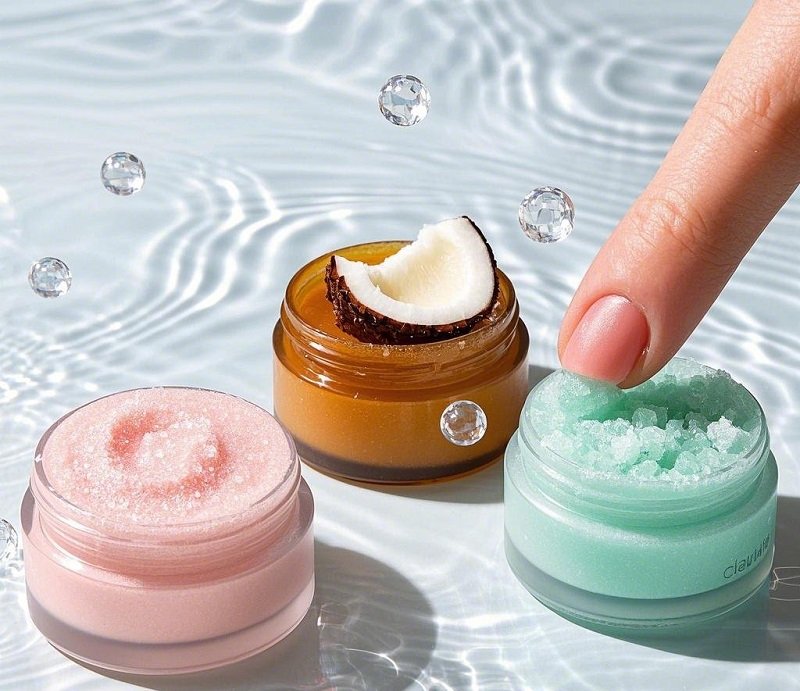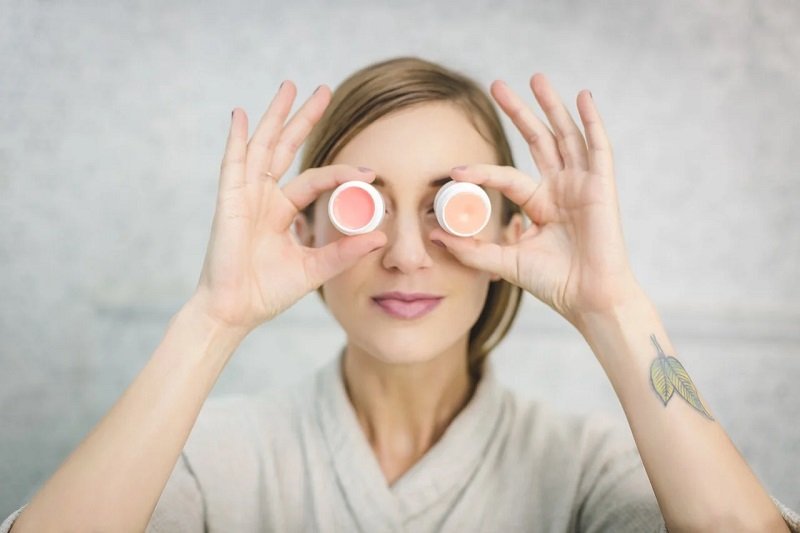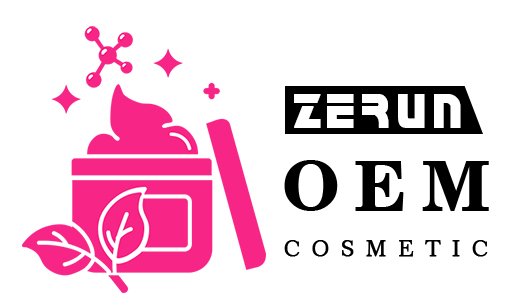Are you tired of battling flaky, cracked lips that ruin your lipstick moments? Lip scrubs have become the go-to solution for people who want to get rid of dryness and enhance their lips.
The best lip scrubs in 2025 harness both natural and high-tech ingredients—like fine sugar grains, lactic acid, and buttery oils—to remove dead skin cells while locking in moisture. They promote smoother lipstick application, faster healing of cracked lips, and an overall lush appearance, making them a must-have in every lip care routine.
What Are Lip Scrubs and Why Should You Use Them?
Lip scrubs are exfoliating treatments that buff away dead skin cells on your lips, revealing a softer, more hydrated surface underneath and preventing annoying flakes or cracking.
The Basics of Exfoliation
- Physical Exfoliants: These use granular particles—like sugar, coffee grounds, or salt—to physically slough off dry skin. The immediate tactile sensation can be very satisfying, as you can literally feel the flakes coming off.
- Chemical Exfoliants: Mild acids such as lactic acid or enzymes from fruits are used to dissolve dead cells. They’re often gentler in the long run, especially for sensitive lips, but they may take a little longer to show results.
Using just any scrub on your lips can be risky—facial scrubs may contain particles that are too abrasive for delicate lip skin. Specialized lip scrubs keep irritations at bay because they’re formulated with smaller or softer particles and balanced moisturizers.
Benefits Beyond Smoothness
- Lipstick Longevity: By removing flaky skin, you create a smooth canvas, allowing lipsticks and glosses to glide on more evenly and stay put longer.
- Increased Moisture: After exfoliation, lip treatments like balms or masks can penetrate deeper, leading to better hydration.
- Healthier Appearance: Regular use can minimize painful cracks, especially in colder or drier climates.
A common mistake is to overdo it—scrubbing too hard or too frequently can irritate or even damage the sensitive skin on your lips. Aim for once or twice a week, paying attention to how your lips respond.
Which Key Ingredients Make a Lip Scrub Effective?
Top-notch lip scrubs often include gentle physical exfoliants (like sugar), hydrating oils (coconut, jojoba), and soothing components (honey, shea butter) to smooth away dead skin cells while nourishing your lips.
Star Exfoliants
- Sugar: The most popular choice in lip scrubs. Fine sugar granules are less likely to cause micro-tears, and they dissolve quickly when rinsed.
- Coffee Grounds: Offers a slightly coarser exfoliation. Bonus perk: The natural caffeine may improve circulation, temporarily plumping your lips.
- Fruit Seeds (e.g., strawberry, raspberry): Tiny seeds can provide a gentle, eco-friendly alternative to synthetic beads.
Sugar remains the reigning champion for lip scrub formulations. However, coffee grounds can be a fun alternative if you crave a stronger buffing experience and a delicious latte-like scent. Still, watch for any harsh edges in the grounds that could irritate super-sensitive lips.
Moisturizing Superstars
- Shea Butter: Rich in fatty acids; helps repair and maintain the skin’s barrier.
- Coconut Oil: Known for its antibacterial properties and deep moisturizing capabilities, making it great for winter months or extremely dry conditions.
- Jojoba Oil: Highly compatible with the skin’s natural sebum, ensuring fast absorption and long-lasting hydration.
The balance between an exfoliant and a moisturizer is crucial. Without proper moisturizing ingredients, lip scrubs can be overly drying. When scanning product labels, ensure you see at least one or two nourishing oils or butters.
Enhancing Add-Ons
- Essential Oils: Peppermint oil creates a cooling feel, while lavender oil may calm irritated skin.
- Vitamins (E, C): Can combat free radicals and help with cell renewal for healthier lips.
- Honey: A natural humectant that traps moisture in the skin, making lips feel plump and soft.
Essential oils can elevate your lip scrub into a spa-like ritual, but be sure you’re not sensitive to them. A quick patch test on the inside of your arm can save your lips from unwanted redness or swelling.
How Do You Choose the Right Lip Scrub for Your Skin Type?

Choose a lip scrub based on your unique lip needs. If you have dryness, pick extra moisturizing oils. For sensitive or easily irritated lips, opt for finer granules and soothing botanicals. Normal lips can handle balanced exfoliants and hydrators.
Understand Your Lip Condition
- Persistently Dry Lips
- Common Signs: Peeling, cracking, and a tight feeling even after using lip balm.
- What You Need: Heavier, occlusive oils and butters (think avocado oil or shea butter) that seal in moisture.
- Sensitive or Easily Irritated Lips
- Common Signs: Redness, stinging, or inflammation after using new products.
- What You Need: Finely milled sugar or mild fruit enzymes for gentle exfoliation, plus soothing components like aloe vera or chamomile extract to calm any flare-ups.
- Normal or Balanced Lips
- Common Signs: Minimal flaking or dryness. Rarely react to new products.
- What You Need: Moderate exfoliants (like regular sugar) paired with lighter oils (jojoba or grape seed) that maintain softness without making lips feel greasy.
- Combination Concerns
- Common Signs: A mix of dryness in certain spots (like the corners) but overall normal texture elsewhere.
- What You Need: A lip scrub flexible enough to focus on flaky areas without over-exfoliating healthier spots—maybe something that has a blend of sugar crystals and mild acids, so you don’t have to press too hard.
Key Ingredients to Consider
- Exfoliants
- Sugar (Fine or Brown): The most common lip scrub ingredient, gentle but effective.
- Coffee Grounds: Coarser texture for those who need a stronger buff.
- Fruit Enzymes or Mild Acids: Ideal for people who can’t handle much friction.
- Moisturizing Bases
- Shea Butter or Cocoa Butter: Creates a protective layer that traps moisture.
- Coconut Oil or Avocado Oil: Softens and hydrates, great for drier lip types.
- Jojoba Oil: Mimics skin’s natural sebum, making it super absorbent for normal lips.
- Add-Ons
- Soothing Botanicals (Aloe Vera, Chamomile, Calendula): Perfect if your lips tend to get red or irritated easily.
- Vitamins (E, C, B5): Help with repair and may offer slight brightening benefits over time.
- Essential Oils (Mint, Lavender, Rose): Provide aromatherapeutic perks, but test for allergies if you’re sensitive.
Potential Pitfalls and How to Avoid Them
- Over-Exfoliation
- What Happens: Lips become raw, tender, or even more chapped.
- Solution: Limit scrubbing to once or twice a week, and keep the motion gentle.
- Allergic Reactions
- What Happens: Swelling, redness, itching—especially around the lip line.
- Solution: Perform a patch test on your wrist or inner elbow before applying to lips.
- Lack of Follow-Up Hydration
- What Happens: After exfoliation, lips can feel great for an hour, then suddenly become dryer.
- Solution: Always apply a balm or lip mask immediately after scrubbing to seal in moisture.
Handy Reference Table: Skin Type vs. Recommended Lip Scrub Features
| Lip Type | Exfoliant Style | Ideal Moisturizers | Recommended Frequency | Potential Add-Ons |
|---|---|---|---|---|
| Very Dry or Chapped | Fine sugar or fruit enzymes (gentler on cracks) | Avocado oil, shea butter | 1–2 times/week | Honey for added hydration |
| Sensitive or Irritated | Very finely milled sugar, enzyme-based | Aloe vera, chamomile extract | 1 time/week (or biweekly) | Fragrance-free or low-fragrance |
| Normal/ Balanced | Standard sugar crystals | Jojoba, light butters | 1–2 times/week | Mild essential oils (if not sensitive) |
| Combination | Combo of sugar + mild acids | Coconut oil, vitamin E | 1–2 times/week, focusing on problem areas | Gentle botanical extracts |
Bringing It All Together
- Step 1: Assess Your Lips: Are they consistently dry, or do they only act up in certain weather? Do you notice redness after trying new products?
- Step 2: Check Ingredients: Look for scrubs formulated with the right balance of exfoliants and oils that match your main concerns (sensitivity, dryness, or general maintenance).
- Step 3: Test & Observe: Use the scrub for a few weeks, noticing any changes. If irritation occurs, scale back usage or try a gentler product.
Final Tip: Don’t underestimate the power of consistent lip care. A good scrub routine, paired with a nourishing balm, can keep your lips feeling soft and looking plump all year round. And if you’re still unsure, consult product reviews, or even talk with a dermatologist—your lips deserve the best!
Do DIY Lip Scrubs Work as Well as Store-Bought Ones?
DIY scrubs can be awesome and budget-friendly, but store-bought options often feature balanced, lab-tested formulas with specific preservatives that ensure longer shelf life and consistent results.
DIY Lip Scrubs: Pros and Cons
- Pros:
- Inexpensive
- Easy to customize (choose your preferred oil, flavor, and sweetener)
- Minimal chemicals or artificial additives
- Cons:
- Texture inconsistency (it’s easy to over- or under-mix ingredients)
- Shorter shelf life without preservatives
- Potential hygiene issues if containers and tools aren’t properly sanitized
While DIY might seem like the perfect route, especially if you love the idea of “kitchen beauty,” not all household ingredients are lip-safe. Cinnamon, for example, can be highly irritating in concentrated amounts. Always research any ingredient you’re thinking of adding.
Simple DIY Recipes
- Honey & Brown Sugar:
- Ingredients: 1 tsp brown sugar, 1 tsp honey
- Method: Mix and apply with a gentle, circular motion.
- Why It Works: Brown sugar provides mild abrasion; honey is a natural humectant.
- Coconut Oil & Sea Salt:
- Ingredients: 1 tsp melted coconut oil, 1/2 tsp fine sea salt
- Method: Stir until you get a uniform paste, then apply softly.
- Why It Works: Sea salt exfoliates, coconut oil soaks into lips for hydration.
- Avocado & Sugar:
- Ingredients: 1 tsp mashed avocado, 1 tsp sugar (fine granules)
- Method: Combine and lightly massage onto lips.
- Why It Works: Avocado is loaded with healthy fats and vitamins that lock in moisture.
These recipes yield immediate softness, but they’re typically perishable. Make small batches and store in mini airtight containers. If you notice any funky smells or changes in texture, toss it to avoid bacterial contamination.
Is There a Correct Technique to Apply and Store Lip Scrubs?
Yes. Gently massage a small amount of scrub onto clean lips for about 20 seconds, rinse or wipe away, then moisturize. Keep lip scrubs sealed in a cool, dry place to maintain freshness and prevent contamination.
Optimal Application Techniques
- Start with Clean Lips:
- Before using a scrub, remove any lipstick or lip balm residue.
- This ensures you’re exfoliating actual dead skin rather than just moving around leftover product.
- Use the Right Amount:
- A pea-sized dollop is usually enough.
- Using too much can lead to waste or unnecessary irritation.
- Gentle, Circular Motions:
- Massage the scrub in small circles for roughly 15–30 seconds.
- Pressing too hard can create micro-tears, especially if the exfoliating particles are coarse.
- Focus on Flaky Areas:
- Pay extra attention to the corners of your lips, where flaking often accumulates.
- Still, keep pressure light to avoid aggravating these sensitive spots.
- Rinse or Wipe Off:
- Use lukewarm water or a soft, damp cloth to remove excess scrub.
- Check that no granules remain, as leftover particles may dry and further irritate the skin.
- Follow Up with a Balm:
- Immediately apply a hydrating lip balm, oil, or butter to seal in moisture.
- This step is crucial for locking in the benefits of exfoliation.
Frequency of Use
- Weekly or Bi-Weekly:
- For most people, using a lip scrub 1–2 times per week is enough to keep dryness at bay without irritating the delicate lip area.
- Sensitive Lips:
- If you notice redness or stinging after exfoliating, cut back to once every two weeks or opt for a gentler formula with very fine sugar or mild fruit enzymes.
- Heavy Lipstick Wearers:
- If you frequently use matte lip products or long-wear formulas, you might benefit from scrubbing twice weekly to remove product build-up and keep lips smooth.
Common Mistakes to Avoid
- Over-Exfoliation:
- It’s tempting to scrub harder or longer when you see flakes, but this can damage your lip skin barrier. Always prioritize gentle, short exfoliation sessions.
- Skipping Moisturizer:
- After sloughing off dead skin, your lips need nourishing ingredients. Forgoing balm or a lip mask can leave them vulnerable to dryness and cracking.
- Using Harsh Particles or Tools:
- Coarse scrubs formulated for the face (or body) can be too abrasive for lips. Opt for products specifically designed for lip use.
Storage and Shelf Life
- Airtight Containers:
- Exposure to air accelerates the breakdown of natural oils and butters.
- Keep the lid tightly closed to maintain both texture and potency.
- Cool, Dry Environments:
- Heat can melt certain butters or cause oils to separate. Aim for room temperature or slightly cooler.
- Avoid storing lip scrubs in humid bathrooms if possible—moisture invites bacteria and mold growth.
- Watch for Changes in Texture or Smell:
- Natural ingredients can spoil over time, especially if preservatives are minimal.
- If you detect an off odor or see unusual separation, discoloration, or mold, it’s safest to toss the product.
- Use Clean Tools or Hands:
- If your lip scrub comes in a jar, scoop the product with a clean spatula or spoon rather than dipping your fingers in.
- This habit helps prevent bacterial contamination that can shorten shelf life.
Extra Tips and Tricks
- Mix and Match Lip Products:
- Pair your scrub with a lip serum or overnight mask for a boost in moisture.
- Alternating between exfoliation and deep nourishment can promote a consistently soft, plump pout.
- Travel-Friendly Options:
- If you’re on the go, consider stick or tube scrubs that minimize mess and reduce contamination risks.
- Keep them away from direct sunlight in your bag or car.
- Seasonal Adjustments:
- In colder months, lips dry out faster, so you might need to exfoliate (and hydrate) slightly more often.
- In warmer climates, scale back if you’re using air conditioning, as it can also dehydrate skin.
| Aspect | Recommendation | Why It Matters |
|---|---|---|
| Application | Use small, gentle circular motions for 15–30 seconds | Prevents micro-tears and irritation |
| Frequency | 1–2 times per week (adjust per sensitivity) | Avoids over-exfoliation and dryness |
| Aftercare | Always follow with a lip balm or mask | Locks in moisture and supports healing |
| Storage | Keep in airtight containers, cool/dry place | Prolongs shelf life and product freshness |
| Clean Tools | Use a spatula or clean hands | Reduces contamination and bacterial growth |
| Check Expiry | Discard if texture or smell changes | Ensures safety and product effectiveness |
A balanced approach—gentle exfoliation, proper hydration, and mindful storage—is the golden rule for getting the most out of your lip scrub. When done correctly, you’ll not only buff away dry flakes but also keep your lips consistently smooth, soft, and ready for any lip product you choose to wear.
Are There Any Side Effects or Risks to Using Lip Scrubs Regularly?

Too much scrubbing can irritate lips, causing redness or sensitivity. Stick to gentle formulas and use them sparingly to avoid over-exfoliation.
Common Pitfalls
- Inflammation and Redness: Vigorous or daily scrubbing can break the skin’s barrier, leading to raw, red lips.
- Allergic Reactions: Ingredients like peppermint, citrus oils, or artificial fragrances can spark allergies.
- Moisture Loss: Paradoxically, exfoliating too frequently can strip natural oils, making lips drier than before.
Pay attention to your skin’s cues. If your lips feel excessively tender or are peeling more than usual, scale back on exfoliation. A less-is-more approach can often be more beneficial in the long run.
Tips to Minimize Risk
- Spot Testing: Dab a little scrub on your wrist to test for reactions.
- Stay Hydrated Inside Out: Drinking enough water is a simple but often overlooked tip for healthy lips.
- Seek Professional Advice: If you consistently experience severe dryness or cracking, consult a dermatologist to rule out underlying conditions.
Lip scrubs are one piece of the puzzle. Overall lip health also depends on your diet, lifestyle (like smoking or constant lip-licking), and the type of lip products (especially matte lipsticks) you use regularly.
Which Are the 13 Best Lip Scrubs in 2025?
These 13 lip scrubs combine effective exfoliation with nourishing, skin-loving ingredients, making them top choices across various budgets, tastes, and needs.
| Brand | Product Name | Key Exfoliant | Primary Moisturizer | Price (USD) | Notable Benefit |
|---|---|---|---|---|---|
| Glow & Co. | Sugar Luxe Glow | Fine sugar | Shea butter + Vitamin E | 12 – 15 | Super gentle yet ultra-hydrating |
| SootheSpa | Smooth & Soothe Exfoli | Brown sugar | Coconut oil | 10 – 12 | Calms sensitive lips |
| BerryBoost | Berry Renewal Scrub | Strawberry seeds | Jojoba oil | 14 – 18 | Fruity scent with antioxidant benefits |
| MintRevive | Minty Fresh Revival | Sugar crystals | Peppermint-infused oil | 10 – 12 | Cooling sensation & invigorating tingle |
| CaffeCraze | Coffee Crème Polish | Coffee grounds | Shea butter | 16 – 20 | Strong exfoliation + energizing aroma |
| HoneyHealing | Honey & Aloe Harmony | Brown sugar | Aloe vera + Honey | 9 – 11 | Especially soothing for extra-dry lips |
| AvocadoGlow | Avocado Infusion | Fine sugar | Avocado oil | 15 – 19 | Deep nourishment from healthy fats |
| VanillaDream | Vanilla Bean Supreme | Sugar crystals | Coconut oil | 12 – 14 | Warm vanilla scent & comforting moisture |
| VitaBright | Vitamin C Glow-Up | Sugar crystals | Vitamin C + Jojoba | 18 – 22 | Subtle brightening effect on lip tone |
| FloralEscape | Rose Petal Refiner | Crushed rose petals | Almond oil | 20 – 25 | Luxurious texture & romantic floral scent |
| GreenZen | Matcha Moisture Boost | Matcha powder | Shea butter | 14 – 17 | Antioxidant-rich & anti-inflammatory |
| Dermacare Labs | Lactic Lift Lip Exfo | Lactic acid | Hyaluronic acid | 25 – 30 | Gentle chemical exfoliation + intense hydration |
| LuxeSparkle | Golden Sugar Deluxe | Brown sugar | Gold-infused oil | 28 – 35 | Glamorous glow & a radiant finishing effect |
Conclusion
We’ve covered everything from the foundational “what and why” of lip scrubs to the ideal application technique and a deep dive into 13 best-in-class options. The bottom line? Incorporating a lip scrub into your routine can drastically improve not just how your lipstick glides on, but also how confident you feel with every smile. When combined with a nourishing follow-up like a balm or lip mask, the difference can be night and day, especially if your lips face the daily assault of matte lipsticks or harsh weather.
Ready to take it a step further and develop your own custom lip scrub line—or any skincare product—for your brand or personal venture? Zerun Cosmetic Factory has you covered. With extensive experience in creating high-quality skincare products, we offer a start-to-finish solution: from tailoring formulations to designing packaging, and even providing free samples so you can see (and feel) the quality for yourself. Don’t hesitate to reach out for inquiries, quotes, or to explore how we can collaborate to bring your dream lip scrub into reality. Let’s make sure smooth, hydrated lips become the norm for you and your customers—no matter where in the world you’re reading this from.





